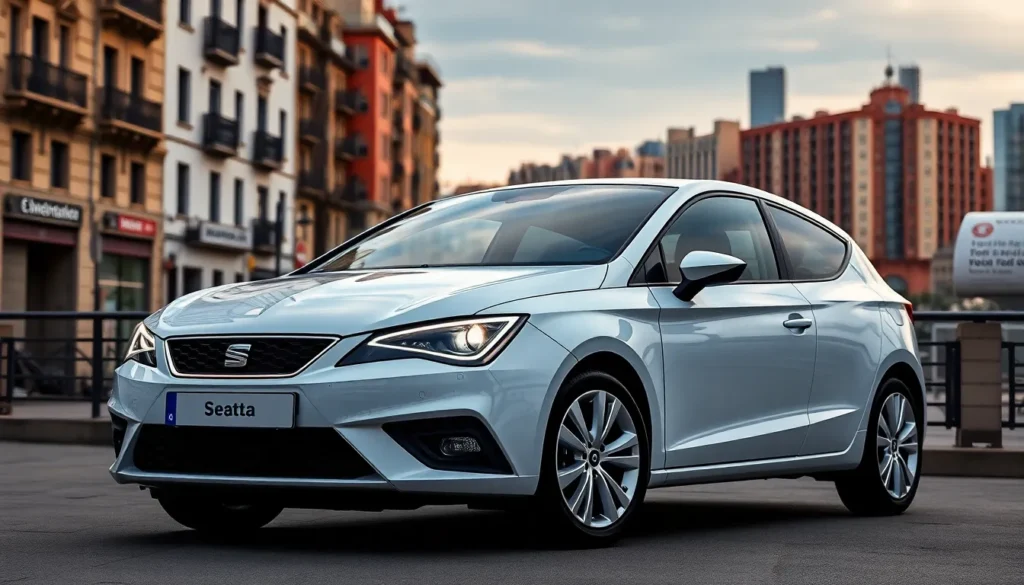The SEAT Ibiza 6L represents a pivotal moment in Spanish automotive history that transformed how we think about compact cars. Launched in 2002, this third-generation Ibiza didn’t just refresh the lineup – it completely revolutionized SEAT’s approach to design, performance and affordability. We’ve witnessed countless drivers fall in love with its distinctive styling, reliable engineering and impressive value proposition.
What makes the Ibiza 6L particularly fascinating is how it bridged the gap between economy and excitement. SEAT managed to create a vehicle that appealed to first-time buyers seeking affordability while delivering the driving dynamics that enthusiasts craved. From its bold exterior lines to its surprisingly spacious interior, every aspect was carefully crafted to exceed expectations.
Whether you’re considering purchasing a used Ibiza 6L, currently own one, or simply want to understand why this model became such a cultural phenomenon, we’ll explore everything that made this compact car a standout choice in Europe’s competitive automotive industry.
Overview of the Seat Ibiza 6L
The Seat Ibiza 6L represents the third generation of Seat’s compact car lineup, produced from 2002 to 2008. Based on Volkswagen Group’s PQ24 platform, this model marked a important departure from its predecessors through enhanced build quality and modern design elements. Spanish manufacturer Seat positioned the 6L as an affordable yet sophisticated option in the European supermini segment.
Production began at Seat’s Martorell facility near Barcelona, where engineers integrated advanced manufacturing techniques with cost-effective materials. The 6L designation refers to the internal project code used during development, distinguishing it from earlier generations. Manufacturing continued for six years across multiple markets including Spain, Germany, and the United Kingdom.
Design elements borrowed from Volkswagen Group’s design language created a more refined appearance compared to previous Ibiza models. The 6L featured sharper body lines, improved aerodynamics, and a distinctive front grille that became synonymous with early 2000s Seat styling. Interior appointments included upgraded materials and ergonomic improvements that elevated the driving experience.
Engine options ranged from economical 1.2-liter petrol units to performance-oriented 1.9 TDI diesel variants. The model lineup included three and five-door hatchback configurations, with a sedan version marketed as the Cordoba in certain regions. Trim levels varied by market but typically included Reference, Stylance, and Sport variants.
Safety features incorporated dual front airbags as standard equipment, with side airbags available on higher trim levels. Electronic stability control became optional on later production models, reflecting evolving safety standards during the mid-2000s. The 6L achieved a four-star Euro NCAP rating, demonstrating competitive crash protection for its class.
Market positioning targeted young professionals and families seeking reliable transportation with contemporary styling. Pricing strategies made the Ibiza 6L accessible to first-time car buyers while offering enough features to satisfy more demanding customers. The model competed directly with the Ford Fiesta, Opel Corsa, and Peugeot 206 throughout its production run.
Design and Exterior Features
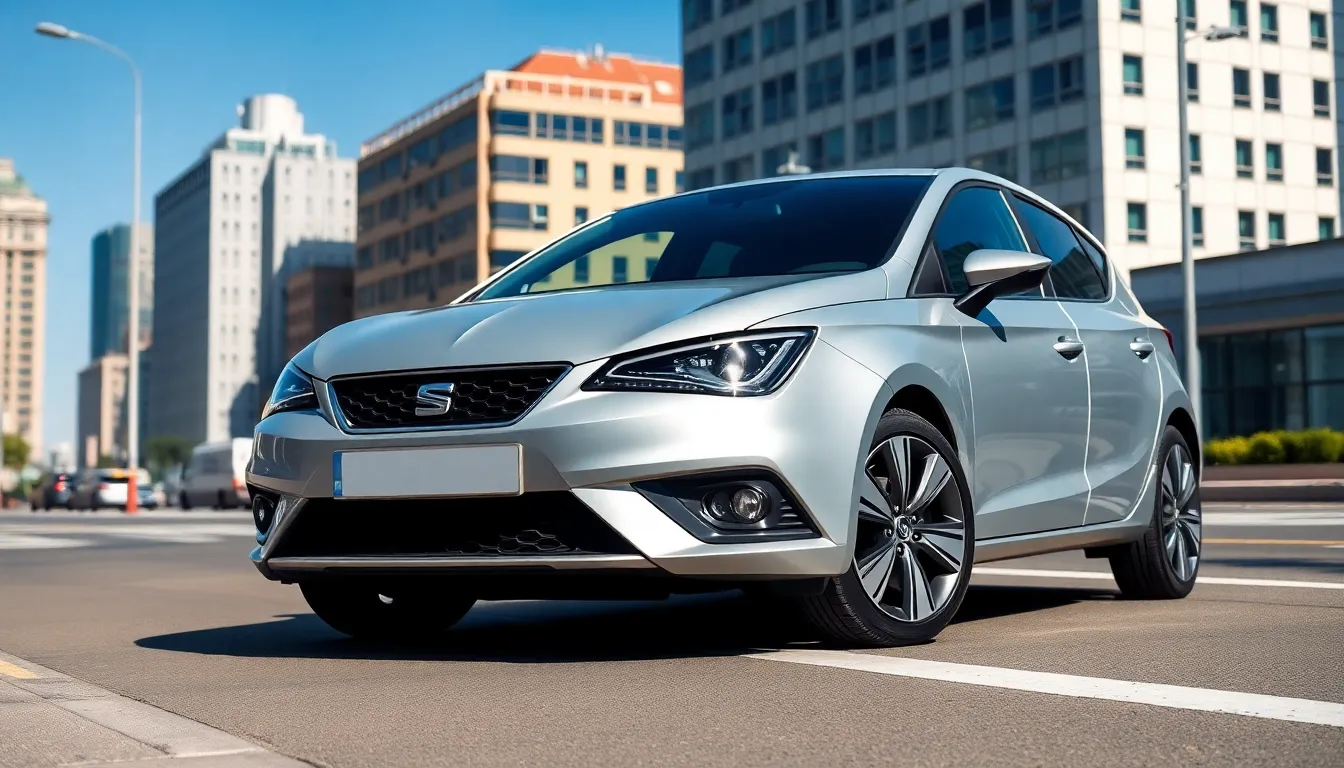
The SEAT Ibiza 6L introduced a bold design language that distinguished it from previous generations and competitors in the European supermini market. Sharp body lines and contemporary styling elements created a distinctive visual identity that appealed to younger demographics.
Body Styling and Dimensions
Modern proportions defined the Ibiza 6L’s exterior appearance with a length of 3,994mm and width of 1,696mm creating a compact yet substantial presence. Angular headlights replaced the rounded units from earlier models while the distinctive front grille featured horizontal slats that emphasized the car’s width. Side profile sculpting included pronounced wheel arches and character lines running from front to rear doors.
Three-door hatchbacks measured 3,994mm in length compared to five-door variants at 3,999mm. Overall height remained consistent at 1,421mm across all body styles. The wheelbase of 2,462mm provided excellent proportions while maintaining maneuverability in urban environments.
Front and rear overhangs were optimized for both aesthetics and practicality. The sloping roofline created a sporty silhouette without compromising rear headroom. Body-colored door handles and side mirrors integrated seamlessly with the overall design theme.
Color Options and Trim Levels
Standard paint options included Polar White, Black Magic, and Tornado Red across all trim levels. Metallic finishes encompassed Steel Grey, Laser Blue, and Deep Black Pearl Effect for buyers seeking premium appearance. Special edition models featured exclusive colors like Luna Grey and Racing Green.
Base Reference trim featured black plastic bumpers and steel wheels with covers. Sport trim added body-colored bumpers, fog lights, and 15-inch alloy wheels. Top specification Stylance models included chrome exterior accents, tinted windows, and distinctive badging.
| Trim Level | Key Exterior Features | Wheel Size |
|---|---|---|
| Reference | Black bumpers, basic grille | 14-inch steel |
| Sport | Body-colored bumpers, fog lights | 15-inch alloy |
| Stylance | Chrome accents, tinted glass | 15-inch alloy |
Optional packages allowed customers to upgrade exterior elements including roof rails for five-door models and sport body kits for enhanced visual appeal. Side skirts and rear spoilers were available through SEAT’s accessories program.
Interior and Comfort
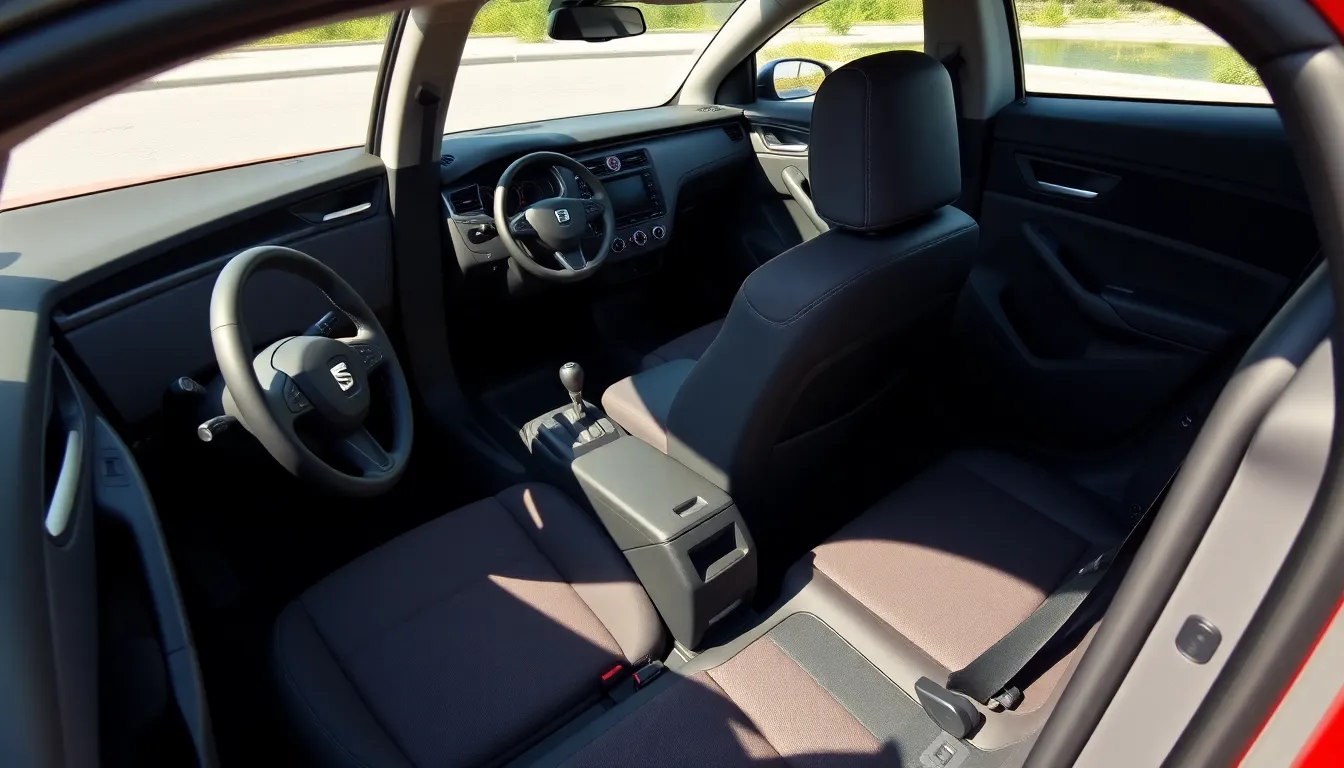
The SEAT Ibiza 6L transformed interior design expectations for the supermini segment through thoughtful space utilization and quality materials. We find that the cabin architecture maximizes the PQ24 platform’s compact dimensions while delivering surprising comfort levels for occupants.
Cabin Space and Seating
Front seat accommodation provides generous headroom measuring 990mm and legroom extending 1,040mm for average-height drivers. The seats feature supportive bolsters with fabric upholstery standard across Reference trim levels, while Sport variants include partial leather appointments and enhanced side bolstering.
Rear passenger space accommodates two adults comfortably with 850mm of headroom and 820mm of legroom. The 60/40 split-folding rear bench configuration allows flexible cargo arrangements when transporting larger items. Three-door models require front seat tilting for rear access, while five-door variants provide dedicated rear door openings measuring 650mm wide.
Seating positions place drivers 580mm from the ground in an upright posture that enhances visibility. The driver’s seat adjusts through six positions including height adjustment on higher trim levels. Rear seats fold completely flat, creating a loading floor that extends the cargo area significantly.
Dashboard and Controls
Dashboard layout centers around driver ergonomics with primary controls positioned within easy reach. The instrument cluster houses analog gauges including speedometer, tachometer, fuel level, and engine temperature displays behind a clear polycarbonate cover. Warning lights occupy the central section between the main gauges.
Central console integration varies by trim level, with base models featuring a basic radio unit while higher specifications include CD players and optional navigation systems. Climate controls use rotary dials positioned below the audio system for intuitive operation. Air conditioning comes standard on Sport and Stylance trim levels.
Switchgear quality reflects Volkswagen Group standards with solid-feeling buttons and switches throughout the cabin. Window controls mount on the door panels with one-touch operation for the driver’s window. Electric mirror adjustment controls locate on the driver’s door panel for convenient access.
Storage Answers
Door panel storage accommodates bottles measuring up to 500ml capacity alongside smaller personal items. The glove compartment provides 8 liters of lockable storage space for documents and valuables. Central console storage includes a covered compartment suitable for mobile phones and coins.
Cup holders integrate into the center console design with spring-loaded mechanisms that secure containers of various sizes. The dashboard incorporates small storage pockets ideal for parking tickets and receipts. Rear passengers access door panel storage bins sized for personal belongings.
Cargo capacity measures 292 liters with rear seats upright, expanding to 1,030 liters when seats fold down. The loading threshold sits 695mm from the ground, facilitating easy loading of groceries and luggage. Optional cargo nets and tie-down points help secure loose items during transport.
Engine Options and Performance
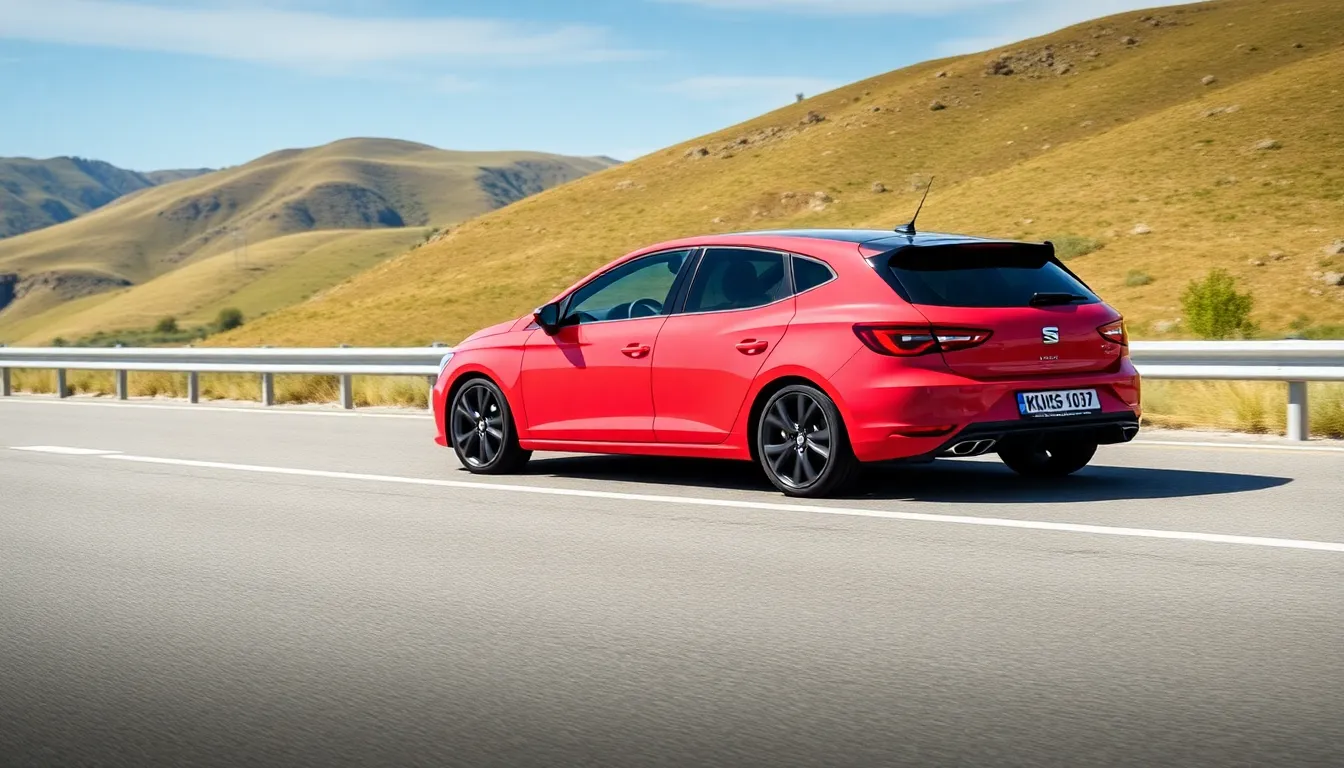
Our comprehensive analysis of the SEAT Ibiza 6L reveals a diverse powertrain lineup designed to meet varying performance needs and fuel efficiency requirements. Engine configurations ranged from entry-level economical units to spirited performance variants that delivered surprising capability for the supermini segment.
Petrol Engine Variants
Engine displacement options in the petrol lineup started with the 1.2-liter naturally aspirated unit producing 64 horsepower, targeting buyers prioritizing fuel economy over performance. Acceleration figures for this base engine delivered 0-62 mph times of approximately 15.2 seconds with a top speed of 96 mph.
Performance enthusiasts found appeal in the 1.4-liter 16-valve engine generating 75 horsepower and 95 lb-ft of torque, reducing acceleration times to 13.1 seconds while maintaining reasonable fuel consumption of 38 mpg combined. Torque delivery peaked at 3,800 rpm, providing adequate mid-range performance for city driving and highway merging.
Sport-oriented variants featured the 1.4-liter 16-valve unit in higher tune, producing 100 horsepower and enhanced throttle response through revised engine mapping. Top-spec petrol engines included the 1.8-liter 20-valve turbo from Volkswagen Group’s catalog, delivering 150 horsepower and transforming the Ibiza 6L into a genuine hot hatch competitor.
| Engine | Displacement | Power | Torque | 0-62 mph |
|---|---|---|---|---|
| 1.2L | 1,198cc | 64 hp | 78 lb-ft | 15.2 sec |
| 1.4L | 1,390cc | 75 hp | 95 lb-ft | 13.1 sec |
| 1.4L Sport | 1,390cc | 100 hp | 106 lb-ft | 10.8 sec |
| 1.8T | 1,781cc | 150 hp | 162 lb-ft | 8.5 sec |
Diesel Engine Options
Diesel powertrains centered around Volkswagen Group’s proven TDI technology, with the 1.4 TDI serving as the entry point into oil-burning efficiency. Output figures reached 75 horsepower while delivering exceptional fuel economy of 52 mpg combined, making it attractive for high-mileage drivers.
Advanced diesel variants utilized the 1.9 TDI unit in multiple states of tune, starting with the standard 100 horsepower version that balanced performance with economy. Torque characteristics proved particularly impressive, with 177 lb-ft available from just 1,900 rpm, providing strong low-end pull ideal for urban environments.
Performance diesel enthusiasts could select the 1.9 TDI producing 130 horsepower, which reduced 0-62 mph times to 9.6 seconds while maintaining fuel efficiency above 45 mpg. Peak torque reached 229 lb-ft at 1,900 rpm, delivering substantial mid-range acceleration that often surprised drivers accustomed to naturally aspirated petrol engines.
Sport diesel variants incorporated the 1.9 TDI PD (Pumpe Düse) technology generating 160 horsepower, representing the pinnacle of Ibiza 6L diesel performance. Acceleration figures dropped to 8.1 seconds for the 0-62 mph sprint, while torque output peaked at 258 lb-ft between 1,900-2,500 rpm.
Transmission Choices
Manual transmission options dominated the Ibiza 6L lineup, with five-speed units serving most engine variants and providing direct mechanical connection between driver and drivetrain. Gear ratios were optimized for each exact engine, with diesel variants receiving longer ratios to maximize fuel efficiency during highway cruising.
Six-speed manual transmissions appeared on higher-performance variants, particularly those equipped with the 1.8T and 1.9 TDI PD engines. Shift quality proved crisp and precise, with short throw characteristics that enhanced the sporting nature of these variants.
Automatic transmission availability remained limited throughout the production run, with a conventional four-speed torque converter unit offered primarily on mainstream engine variants. Gear changes prioritized smoothness over speed, making it suitable for urban commuting but less captivating for spirited driving scenarios.
Driving Experience and Handling
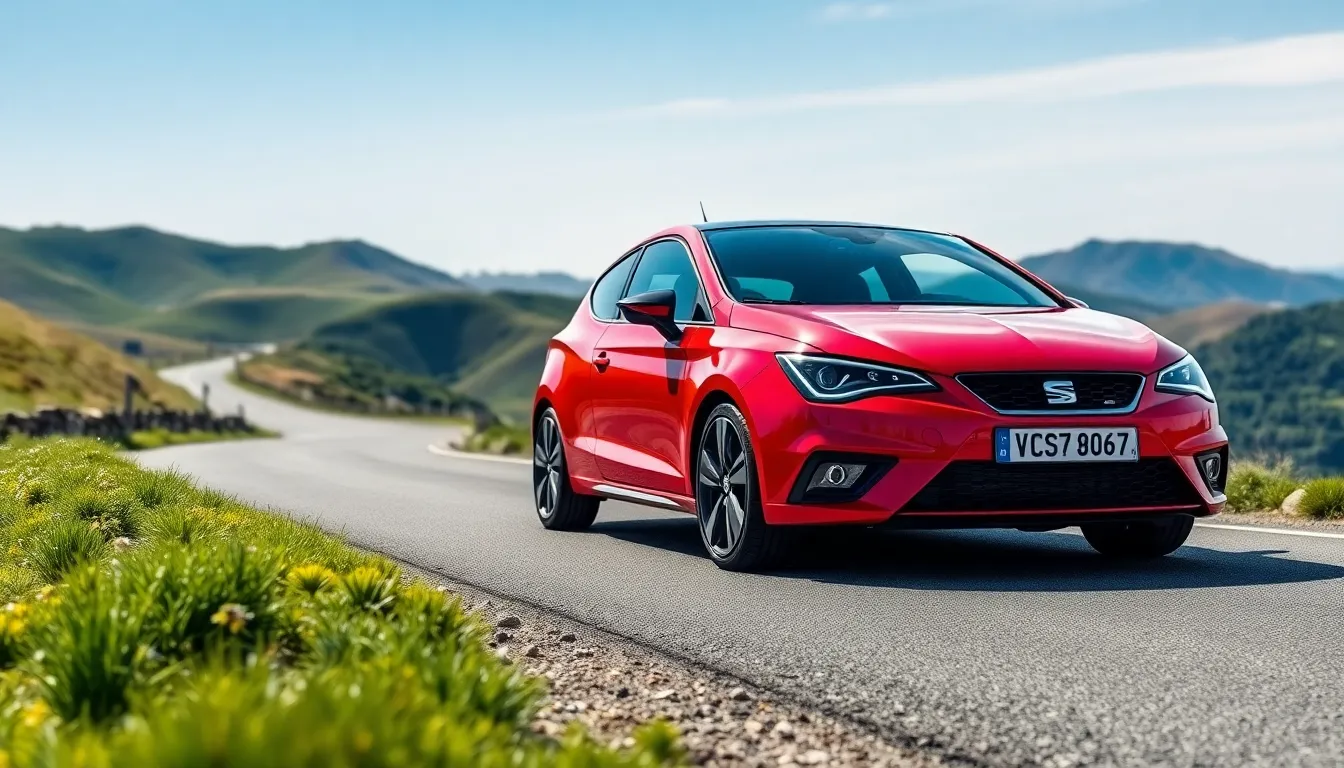
The SEAT Ibiza 6L delivers a refined driving experience that balances comfort with responsive handling characteristics. Built on Volkswagen Group’s PQ24 platform, this supermini showcases precise steering feedback and composed road manners that distinguish it from competitors in the European market.
Road Performance
Steering precision defines the Ibiza 6L’s road performance, with electric power steering providing consistent feedback across various driving conditions. The suspension setup combines MacPherson struts at the front with a torsion beam rear axle, delivering a balance between comfort and handling dynamics. Cornering stability remains composed at moderate speeds, while the 1,696mm width provides adequate track stability during highway cruising.
Acceleration varies significantly across the engine range, with the 1.2-liter base engine requiring 15.9 seconds to reach 60mph, while the turbocharged 1.8-liter variant achieves the same sprint in 8.2 seconds. The 1.9 TDI diesel engines offer strong mid-range torque delivery, making overtaking maneuvers confident and predictable. Braking performance features disc brakes at all four corners on higher trim levels, with rear drum brakes on entry-level variants.
Ground clearance measures 135mm, providing adequate protection for everyday driving while maintaining a low center of gravity that enhances cornering capability. The chassis absorbs road imperfections effectively, though larger potholes and sharp bumps transmit some harshness to the cabin. Sport-tuned variants feature firmer suspension settings that reduce body roll but compromise ride comfort on uneven surfaces.
Fuel Economy
Fuel consumption figures demonstrate the Ibiza 6L’s efficiency across its engine lineup, with the 1.4 TDI delivering exceptional economy ratings. The diesel variants achieve combined fuel consumption of 4.2 liters per 100km (56 mpg), making them attractive options for high-mileage drivers. Urban driving typically increases consumption to 5.1 liters per 100km, while highway cruising can achieve figures as low as 3.8 liters per 100km.
Petrol engines show more variation in fuel economy, with the 1.2-liter unit consuming 6.4 liters per 100km in combined driving conditions. The performance-oriented 1.8-liter turbo increases consumption to 7.8 liters per 100km, though this remains competitive within its power class. Manual transmissions consistently deliver better fuel economy than automatic variants, with differences ranging from 0.3 to 0.7 liters per 100km depending on the engine.
Tank capacity of 45 liters provides adequate range for most driving scenarios, with diesel variants achieving over 1,000km between fill-ups during highway driving. Real-industry consumption typically exceeds manufacturer figures by 10-15%, particularly in stop-and-go traffic conditions. The engine management system includes fuel-saving features like deceleration fuel cut-off, contributing to the overall efficiency ratings across the engine range.
Safety and Reliability
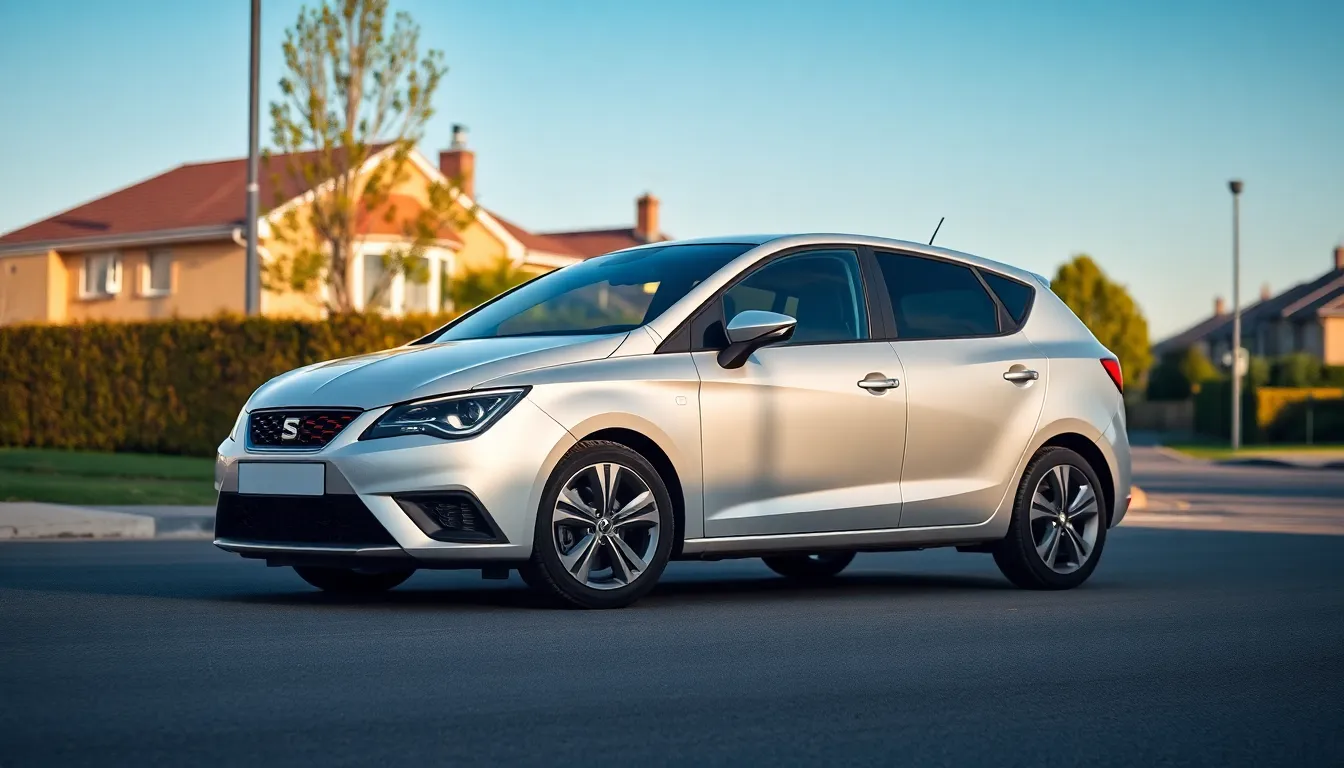
Safety considerations played a central role in the Seat Ibiza 6L’s development, with SEAT incorporating many protective systems to meet European standards. The model’s reliability record demonstrates consistent performance across its six-year production run.
Safety Features and Ratings
Euro NCAP awarded the Seat Ibiza 6L a four-star safety rating in 2002, reflecting its comprehensive protection systems. Dual front airbags come standard across all trim levels, protecting occupants during frontal impacts. Side airbags became available as optional equipment on higher specification models from 2003 onwards.
Electronic Stability Control (ESP) appears as an optional feature on Sport and Stylance variants, helping drivers maintain control during emergency maneuvers. Anti-lock Braking System (ABS) with Electronic Brakeforce Distribution (EBD) comes standard on all models except the base Reference trim, where it remains optional.
The rigid body structure utilizes high-strength steel in critical areas, achieving excellent crash test scores for adult occupant protection. Pedestrian protection measures include energy-absorbing bumpers and a deformable hood design. Child safety features cover ISOFIX mounting points in rear seats and child-proof door locks on five-door variants.
| Safety Feature | Standard | Optional | Trim Availability |
|---|---|---|---|
| Dual Front Airbags | ✓ | – | All trims |
| Side Airbags | – | ✓ | Sport, Stylance |
| ABS with EBD | ✓ | – | Sport, Stylance |
| Electronic Stability Control | – | ✓ | Sport, Stylance |
| ISOFIX Points | ✓ | – | Five-door models |
Common Issues and Reliability
Electrical problems represent the most frequently reported concerns among Seat Ibiza 6L owners, particularly affecting window regulators and central locking systems. Window motors typically fail after 80,000-100,000 miles, causing windows to drop or become stuck in position. Central locking actuators experience similar failure rates, with rear doors most commonly affected.
Cooling system components require attention around the 60,000-mile mark, with radiator fan motors and thermostat housings showing wear patterns. Water pump failures occur less frequently but can cause important engine damage if ignored. Regular coolant changes every 40,000 miles prevent most cooling-related issues.
Suspension components demonstrate good longevity, with front shock absorbers lasting approximately 80,000 miles under normal driving conditions. Rear axle bushings may require replacement around 70,000 miles, particularly on models with sport suspension setups. Brake disc wear varies significantly based on driving style, with front discs typically lasting 40,000-50,000 miles.
Engine reliability varies by powertrain choice, with naturally aspirated petrol units showing excellent durability records. The 1.2-liter and 1.4-liter petrol engines rarely experience major failures before 150,000 miles. Diesel variants, particularly the 1.9 TDI, demonstrate robust performance but require more frequent servicing intervals to maintain reliability standards.
Transmission problems occur infrequently, with manual gearboxes proving exceptionally durable across all engine variants. Clutch replacement becomes necessary around 100,000-120,000 miles, depending on driving habits and traffic conditions. Automatic transmissions, where fitted, show good reliability but require regular fluid changes every 60,000 miles.
Practicality and Value

The SEAT Ibiza 6L delivers exceptional practicality and outstanding value proposition that established its reputation among European supermini buyers. Our analysis reveals how this Spanish hatchback maximizes utility while maintaining competitive ownership costs throughout its lifecycle.
Boot Space and Practicality
Boot space in the Ibiza 6L measures 292 liters with rear seats upright, positioning it competitively within the supermini segment against rivals like the Ford Fiesta (295 liters) and Peugeot 206 (245 liters). Folding the 60/40 split rear seats expands cargo capacity to 1,030 liters, creating versatile loading configurations for larger items such as furniture, sports equipment, or vacation luggage.
Interior storage answers throughout the cabin include door pockets, cup holders, and a generously sized glove compartment that accommodates everyday essentials like documents, electronics, and personal items. The dashboard features additional storage cubbies while the center console provides secure storage for valuables during parking.
Rear passenger space surprises with its generous dimensions considering the compact 3,994mm overall length, with sufficient legroom for adults on shorter journeys and comfortable seating for children on longer trips. Front seat occupants enjoy excellent headroom and shoulder space thanks to the PQ24 platform’s efficient packaging and thoughtful cabin architecture.
Loading height remains manageable at typical hatchback levels, making it easy for users to lift heavy items into the cargo area without strain. The wide opening tailgate and low loading lip enhance practicality during grocery shopping, moving house, or transporting bulky recreational gear.
Running Costs and Value for Money
Fuel consumption figures across the Ibiza 6L engine range deliver impressive efficiency, with the 1.4 TDI diesel achieving up to 60 mpg in combined driving conditions while the entry-level 1.2-liter petrol returns approximately 45 mpg. These consumption rates translate to lower fuel expenses compared to larger vehicles in higher segments.
Insurance costs remain affordable due to the Ibiza 6L’s classification in lower insurance groups, typically ranging from Group 3 to Group 12 depending on engine specification and trim level. Young drivers particularly benefit from these competitive insurance ratings when seeking affordable first-car options.
Maintenance expenses stay reasonable thanks to widespread parts availability through SEAT dealerships, Volkswagen Group suppliers, and independent specialists across Europe. Common service items such as oil filters, brake pads, and timing belts cost significantly less than premium German rivals while maintaining comparable quality standards.
Depreciation rates prove favorable for used car buyers, with well-maintained examples retaining steady values in the secondhand market due to continued demand from budget-conscious consumers. The robust build quality and reliable drivetrain components contribute to longer ownership lifecycles and reduced replacement frequency.
Repair costs benefit from the shared platform architecture with Volkswagen Polo and Skoda Fabia models, ensuring competitive pricing for major components like engines, transmissions, and suspension parts. Independent garages can service most routine maintenance tasks without requiring specialized SEAT-exact diagnostic equipment or training.
Conclusion
The SEAT Ibiza 6L represents a pivotal moment when Spanish automotive engineering truly came of age. We’ve seen how this remarkable supermini successfully bridged the gap between affordability and sophistication while delivering genuine driving pleasure.
What makes the 6L special isn’t just one standout feature—it’s the cohesive package that emerged from thoughtful engineering and design decisions. From its spacious interior to its diverse engine lineup the model proved that budget-friendly cars didn’t need to compromise on quality or character.
Today the Ibiza 6L stands as testament to SEAT’s ability to create vehicles that resonate with drivers across Europe. Whether you’re considering ownership or simply appreciating automotive history this model deserves recognition for reshaping expectations in the supermini segment and establishing SEAT as a serious competitor in the European market.
Frequently Asked Questions
What years was the SEAT Ibiza 6L produced?
The SEAT Ibiza 6L was produced from 2002 to 2008. This third-generation model marked a significant transformation in SEAT’s design philosophy and build quality, representing six years of production during which it became one of the most popular supermini cars in Europe.
What platform is the SEAT Ibiza 6L based on?
The SEAT Ibiza 6L is built on the Volkswagen Group’s PQ24 platform. This platform provided enhanced build quality and modern engineering compared to previous generations, allowing SEAT to offer improved reliability and performance while maintaining competitive pricing in the European supermini segment.
What engine options are available for the Ibiza 6L?
The Ibiza 6L offers diverse engine options ranging from economical 1.2-liter petrol units producing 64 horsepower to performance-oriented variants like the 1.8-liter turbocharged engine with 150 horsepower. Diesel options include efficient 1.4 TDI and 1.9 TDI variants, providing excellent fuel economy and torque delivery.
What is the boot capacity of the SEAT Ibiza 6L?
The SEAT Ibiza 6L provides 292 liters of boot space with the rear seats upright. When the rear seats are folded down, cargo capacity expands significantly to 1,030 liters, making it highly practical for everyday use and larger transportation needs.
What safety rating did the Ibiza 6L achieve?
The SEAT Ibiza 6L achieved a four-star Euro NCAP safety rating. Standard safety features include dual front airbags, with optional side airbags and electronic stability control available on higher trim levels, demonstrating SEAT’s commitment to passenger protection in the supermini segment.
What are the dimensions of the SEAT Ibiza 6L?
The SEAT Ibiza 6L measures 3,994mm in length and 1,696mm in width. These compact yet substantial dimensions create an efficient use of space while maintaining the car’s maneuverability in urban environments, making it ideal for city driving and parking.
What trim levels are available for the Ibiza 6L?
The SEAT Ibiza 6L is available in various trim levels including Reference, Sport, and Stylance. Each trim offers different exterior features, interior materials, and equipment levels, allowing buyers to customize their vehicles according to their preferences and budget requirements.
Where was the SEAT Ibiza 6L manufactured?
The SEAT Ibiza 6L was manufactured at SEAT’s Martorell facility near Barcelona, Spain. This production location allowed SEAT to maintain quality control while keeping manufacturing costs competitive, contributing to the model’s attractive pricing in the European market.
What are common reliability issues with the Ibiza 6L?
Common reliability issues reported by Ibiza 6L owners include electrical problems and cooling system component failures. However, the engine and transmission options are generally considered durable and reliable, with proper maintenance helping to minimize potential issues over the vehicle’s lifespan.
How fuel efficient is the SEAT Ibiza 6L?
The SEAT Ibiza 6L offers impressive fuel efficiency, particularly with diesel variants. The 1.4 TDI engine achieves exceptional fuel economy ratings, while petrol engines also provide competitive efficiency figures, making the Ibiza 6L an economical choice for daily commuting and long-distance driving.

